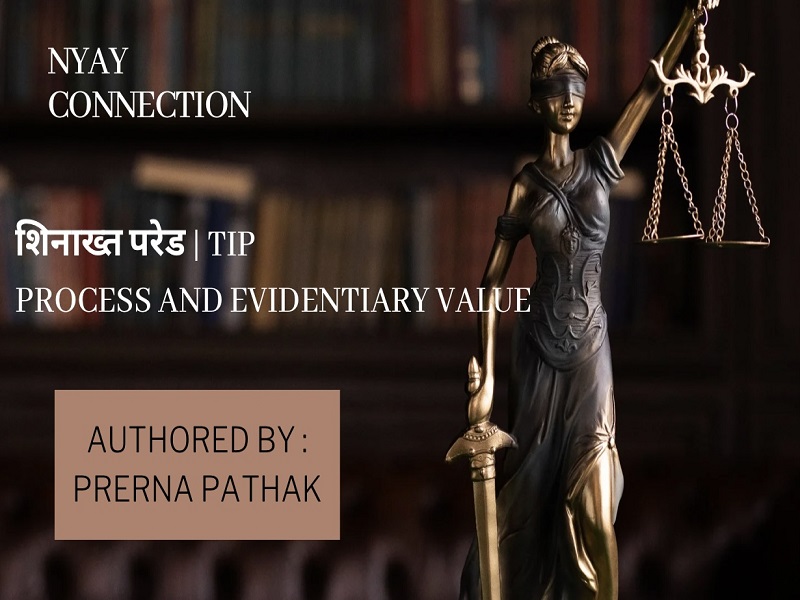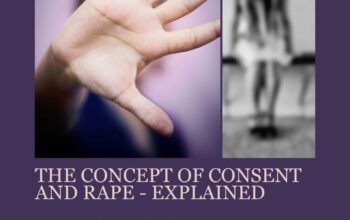Laws are of two different categories, substantive laws and procedural laws where the former confer rights and impose liabilities on individuals and the latter provides for the methods through which these rights and liabilities shall be exercised and enforced respectively. Broadly the Code of Criminal Procedure, 1973, and the Indian Evidence Act, 1872 comprise the procedural aspect of criminal law. Evidence sets out to either prove or disprove the existence or nonexistence of an alleged fact and the rules for such approval and disapproval are set out in the Indian Evidence Act, of 1872.
With that in mind, let us understand the concept of the Test Identification Parade. Test Identification Parade is primarily a procedure in criminal cases to identify the accused in front of the court by witnesses who claim to have seen the accused at the time of the crime. It is the witness’s obligation to identify the accused through the parade where the accused is mixed with a group of people. The aim of this process is to see if the witness can identify the accused among the many individuals, this establishes the witness’s integrity in identifying an unknown individual connected to the context of the offense.
Section 9 of the Indian Evidence Act, 1872, where the identification of the accused and his property as a relevant fact is admissible in the court but it is not obligatory for the accused to present himself for this procedure by the investigating officer and Section 54A of the Code of Criminal Procedure, 1973 where the court having jurisdiction of the case may request the investigating officer to produce the accused for the test identification parade if it is necessary for the investigation of the offense.
PROCEDURE :
The parade must be conducted as soon as possible so that the witness does not forget the details. In Girja Shanker v. State of U.P. AIR 1993 SC 2618 the court held that the Test Identification Parade assumes importance, particularly if held within a reasonable time after the commission of the offence. As far as feasible, identification parades are conducted by a Judicial Magistrate at the jail and the Police Officers should efface themselves completely while preparing for the parade, leaving the actual identification proceedings to the Magistrate. When a parade must be held for the identification of a person or persons by a witness such person or persons shall be carefully kept out of the view of the witnesses, and mingled with a considerable number of other persons who share common age, height, build, status, etc. Witnesses should then be called in one by one, and they should be asked to go around the parade and point out the accused, if any. After one witness has gone through the parade, care should be taken to ensure that the witness does not mingle or communicate with the other witnesses whose identification parade is yet to be conducted, or with other outside persons.
A complete record must be made of everything that takes place during the parade.
Identification of Property is conducted in certain criminal cases where identification of the object used in the crime is required. When a witness claims to be able to identify the properties associated with the case under investigation, the investigating officer asks several questions regarding the description of the property, any identifications marks, if the witness has seen the property before or any other questions that are relevant to the identification of the property.
EVIDENTIARY VALUE :
The parade is an important part of the investigation for both the prosecution and the accused. It allows the investigating officer to determine the correctness or otherwise of the claim of those witnesses who claim to have seen the perpetrator of the crime and their ability to identify him, thereby filling the gap in the investigation regarding the identity of the culprit. It also protects the suspect or accused from the sudden risk of being identified in the dock by the same witnesses during the trial. The line-up of suspects in a test identification parade is a viable method of assessing the memory and honesty of witnesses in such cases, and it has proven to be effective in practise.
The evidentiary value of the test identification parade is corroborative in nature i.e., it is a shred of primary evidence but not a substantive piece of evidence, therefore, a conviction cannot be based entirely on the results of the test identification parade; the witness must be identified in court in order to be convicted. The Supreme Court in the case of State of Andhra Pradesh v. K. Venkata Reddy 1976 AIR 2207 held that a witness statement in court is substantive testimony, whereas the witness’ identification in the Test Identification Parade is just confirmatory of the testimony given in court. Further, the reluctance of the accused to participate in the test identification parade cannot be a sole ground for conviction as was held in the case of Rajesh and Anr v. State of Haryana CRIMINAL APPEAL NO. 1226 OF 2011.
In Suresh Chandra Bahiri v. State of Bihar AIR 1994 SC 2420 the court held that identification of an accused in court is a substantial piece of evidence only when the person is unknown to the witness: No identification is required when the accused has been seen by the witness several times at various locations and times.
Identification parades have been used for a long time, with the goal of determining whether a suspect is the perpetrator of a crime by placing him in a line with other people for identification. Test identification parade maybe just be corroborative evidence but plays a vital part in the investigation. The test is criticized because of the amount of relevance it places on human memory as it can be easily manipulated but one cannot deny its importance and the fact that it has been relied upon for several years.
This article is written by Prerna Pathak. Prerna is pursuing her L.L.M. from Jamia Millia Islamia.
If you are a law student or professional and want to contribute to this website, send your submission at nyayconnection@gmail.com.





Very nice prerna 👍